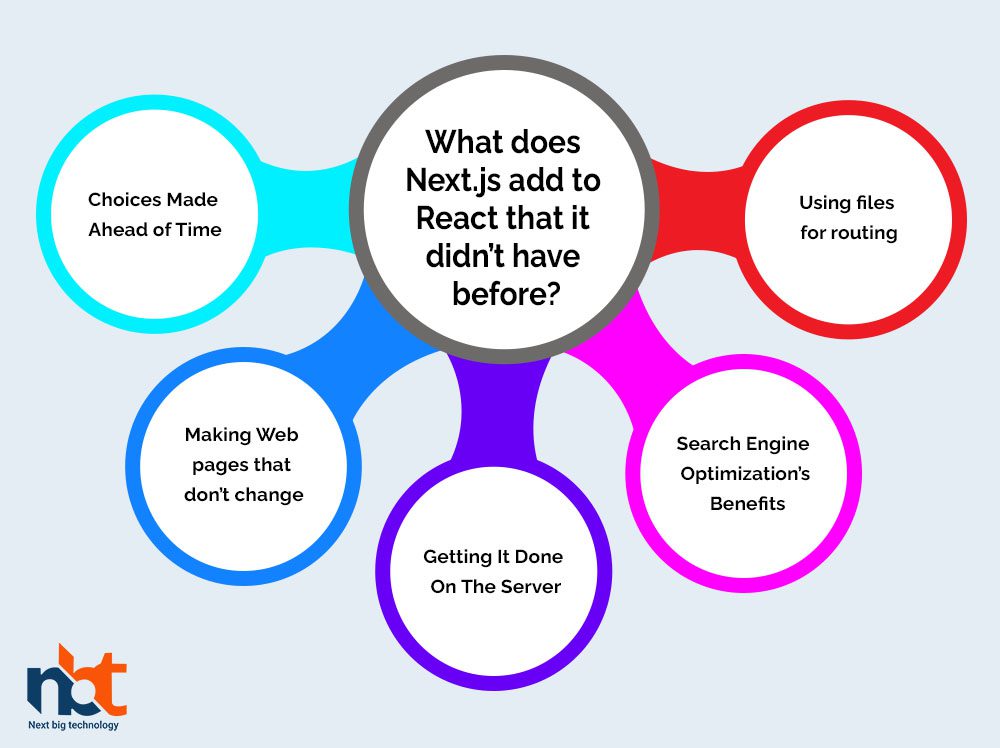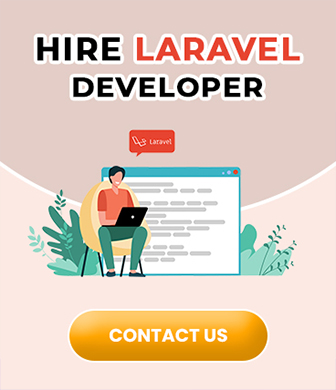Vercel created the Next.js framework, a powerful JavaScript environment for building websites and apps. Next.js is based on React, a JavaScript toolkit that makes it faster and easier to make UI for the front end of a website.
React is sometimes enough to make a web app’s front end fully functional. But for their applications to do what they need, many developers import many external dependencies. But Next.js has more organizational and functional benefits than React does on its own, and it also has several popular features.
Table of Contents
What does Next.js add to React that it didn’t have before?
On top of React, Next.js adds features that make it easier for programmers to put their React apps into production. Here is a quick list of some of the things that make Next.js different from React.
Choices Made Ahead of Time
In React-based web apps, page elements that don’t change are rendered locally on the client so that pages load faster. After that, the requests to the network needed to get the page’s needed data will be sent. Any data that was sent back will be added to the website.
Also read : Hire The Best Nextjs Developers From Top Nextjs Development Company
Because of the network queries and amount of data, it can take a while for a page to finish loading when it needs to be hydrated. When a page takes a while to load, it’s common for the developer to add a loading indicator to the user interface.
Next.js has a server-side rendering option that can be used instead of this time lag between rendering a page and adding data. Next.js does this by rendering a page’s static parts, then getting data and putting it on the page, and finally sending the finished page to the client. Next.js has two ways to make pages ahead of time: static page generation and server-side rendering.
Making Web pages that don’t change
During the building process for a static page, the HTML is pre-rendered. This can be done with or without retrieving the page’s data. With the help of Next.js’s getStaticProps function, developers can get data during the compilation process before the page is shown. The developer can then pass the data retrieved as props, which are then used to fill in the UI.
Vercel says that static page generation should be used whenever possible because it loads quickly and can be cached. Static page creation is most useful in a web app for pages that don’t need to be changed often, like landing pages or blog posts.
Getting It Done On The Server
Developers should use server-side rendering on pages that show data that changes often. If this option is chosen, the server will make the page’s static HTML every time a client requests it.
Similar to how static pages are made, developers can use the Next.js function getServerSideProps to get data from the method and return it as props for the page to use.
Search Engine Optimization’s Benefits
Another benefit of the pre-rendering options we’ve discussed is better search engine optimization. If you pre-render pages and the data they contain, search engines may rank your web app higher. Web spiders can read the HTML and data on a page that has already been rendered, and the keywords they find are used to figure out where you rank. Since data is loaded after a page is built, web crawlers won’t see any keywords in that data. This is a problem for web apps that are only built with React.
Using files for routing
Next.js also lets you route pages based on files, which is a nice extra. The Next.js repositories already have a directory structure that makes adding new pages easy.
When Next.js finds an index file, it knows it has reached the root of the page’s directory or one of its subfolders.
Next.js can do both fixed and changeable routing. Static routes must be made explicitly by developers, while dynamic routes can be made implicitly by using brackets whose contents stand in for a part of the URL that can change at runtime.
The file tree above shows a static nested route comprised of both dynamic and static nested pages and a dynamic nested route comprised of a single nested index page.
The file-based page routing in Next.js means you don’t have to import a routing library, which is usually needed when working with a React app. Developers like the file-based page layout because it is simple and doesn’t require them to set up routes in the code by hand.
Should I use Next.js to make my next web app?
Here are some things to think about while deciding whether or not to use Next.js for your next project:
- If you use Next.js for your next project or app, you will also be working with React, even though the two are very different.
- Do you want to make it take the client less time to load content? Next.js can speed up making a page because it can pre-render.
- Some of the things that Next.js does can be built by hand. This includes importing libraries to control how pages are routed and rendered before they are shown. Next.js, on the other hand, has these features built-in, which makes it easier to get your application up and to run.
Also read : How to build fast and SEO-friendly web apps using ReactJs, Redux, and NextJs
Key Ideas
Next.js is a JavaScript framework for making apps that can be deployed. It is built on the React library.
- Pre-generating is a built-in feature of Next.js that helps developers shorten the time it takes for visitors’ pages to load and improves SEO by showing pages that already have the data they need.
- When files are in the pages directory of the file tree, Next.js will automatically figure out if they are static, dynamic, or nested routes. This means you don’t have to import a router library and define routes in the codebase. How Next.js is set up by default makes it easy for programmers to understand.
- If you know how to use React and want to cut down on user wait times, improve your SEO, and get your app into production quickly, you could use Next.js to make your next web project.
Thanks for reading our post “Benefits of hiring Nextjs developer”, please connect with us for any further inquiry. We are Next Big Technology, a leading web & Mobile Application Development Company. We build high-quality applications to full fill all your business needs.




















